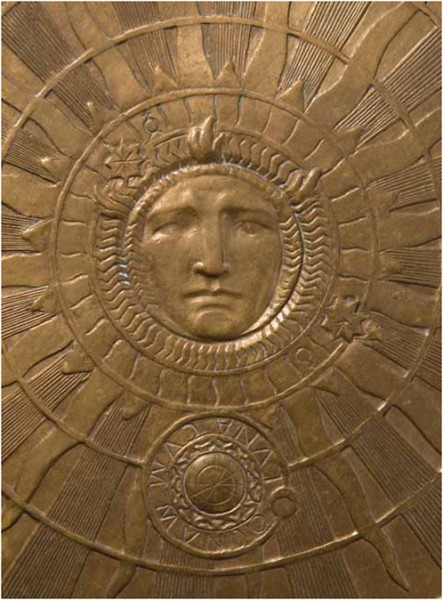Archives – Summer 2011
 LEE LAWRIE, Floor Cover Medallion for the Great Hall of the National Academy of Sciences (detail), Bronze, 1924. Photo by Mark Finkenstaedt.
LEE LAWRIE, Floor Cover Medallion for the Great Hall of the National Academy of Sciences (detail), Bronze, 1924. Photo by Mark Finkenstaedt.
This bronze medallion is one of many sculptural and bas-relief elements created by Lee Lawrie (1877-1963) for the National Academy of Sciences building on Constitution Avenue in Washington, D.C. It is based on a map of the solar system published in the Harmonia Macrocosmica star atlas by Andreas Cellarius, Amsterdam, 1660. In this image detail, one finds symbols for the Sun, Earth, Moon, Mercury, and Venus.
Known for his Atlas statue in New York City’s Rockefeller Center, Lawrie has been called the dean of American architectural sculptors. Over the course of his career, he collaborated with NAS Architect Bertram Grosvenor Goodhue on many projects. They believed that sculpture should be integrated into the architecture of a building and not merely applied into it.
This medallion functions as a floor cover when the Foucault pendulum and spectroscope base (no longer in operation) is lowered below the Great Hall’s floor. The pendulum and spectroscope were among several scientific exhibits maintained by the NAS until WWII for the general public. Several galleries adjacent to the Great Hall were also used for scientific exhibitions. The NAS building is currently undergoing a major restoration project. When it reopens in 2012, the galleries will once again be used for exhibitions.
